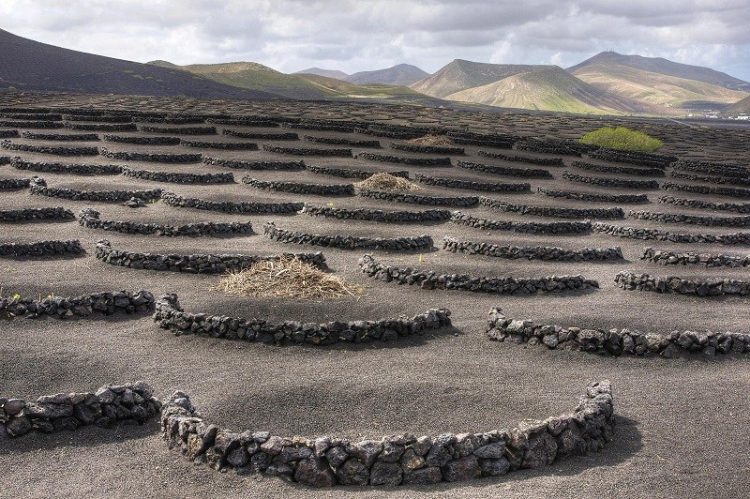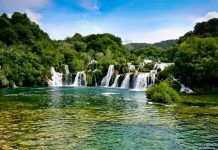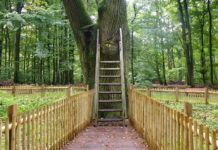Lanzarote Vineyards – The Magical Black Gardens / In Lanzarote, Spain there is a unique cultural landscape Vineyards called “La Geria”. The La Geria covers around 5,250 hectares, of which almost 3,000 acres are cultivated. The vineyards of Lanzarote are spectacular and fascinating. Semi-Circular stonewalls protect verdant vines from the persistent blowing trade winds.
At first look, you can’t even help. The cultivation of grapes in Lanzarote is unique to this part of the world. But to be impressed by endless land that’s covered with black ash and volcanoes. Most of the island has treeless, moonlike landscapes with different colored soils, craters, strange rock formations, and gently sloping mountains.
The La Geria covers around 5,250 hectares, of which almost 3,000 acres are cultivated. The vineyards of Lanzarote are spectacular and fascinating. Semi-Circular stonewalls protect verdant vines from the persistent blowing trade winds. At first look, you can’t even help.
The cultivation of grapes in Lanzarote is unique to this part of the world. But to be impressed by endless land that’s covered with black ash and volcanoes. Most of the island has treeless, moonlike landscapes with different colored soils, craters, strange rock formations, and gently sloping mountains.
These Vineyards spot actually created more than 250 years ago with human hands. Each vine yields produced approximately 25KG of grapes a year. However, the rains make the place seem like a miracle. The greenery you might expect to find at this tropical latitude is almost completely absent from most of Lanzarote. The young Vineyards is placed into this human-made depression. Then, larger volcanic stones are balanced around the wind-facing edge of the hole, creating a low, semicircular barrier.
The ‘Paisaje Protegido’ – culturally protected landscape has an interesting history. In the 18th century, Lanzarote was a lush island with thriving agriculture industry. But massive volcanic eruptions took place in the 1730s when the entire region was covered in Lave ash. A series of violent eruptions left thick layers of ash and volcanic pebbles on the ground.
That is also called lapilli, Rofe, or picón. Therefore, thousands of hectares of fertile farmland were lost under up to three meters thick layers of ash. After the volcanoes had ceased to rumble, the Islanders starts to dig holes until they came upon fertile soil in areas where the lapilli was thin.
Then they began to plant vines and other fruit trees. After they quickly realized that the ash was a blessing in disguise. The lapilli is porous and has hygroscopic (water-attracting) properties. Some wineries still follow the traditional practice of using camels to haul newly harvested grapes from the vineyard to the processing areas, which are lower on the hillside.
The cool breezes from the Atlantic and the warm temperatures from the African mainland give the vineyards the kind of warm-to-cool variation that grapes need. Also, the days are warm and almost always sunny; nights are very cool.
Though annual rains fall is very low in Lanzarote. But early morning hours are very humid and allow ash to store the morning dew. The difference in temperature, known in the viticulture world as the diurnal temperature variation, is important for grapes to develop both the right amount of acidity and sweetness.
The pits where the vines are dug have to be 5 meters in diameter and 2-3 meters deep and also need a lot of space. The roots spread out in a wide circle near the surface to be able to absorb as much water as possible. The range of wines from La Geria includes the traditional Lanzarote wines Malvasia, Listán Negra, Moscatel, and Manto.
To add to the mystic, tourists often arrive at the wineries’ bodegas on the backs of camels. Imported from the Sahara long ago, these beasts are able to easily negotiate the soft, sandy soil and go where vehicles cannot. Lanzarote landscapes are unforgettable and you must visit once in a lifetime.
-

Lanzarote Vineyards – The Magical Black Gardens -
 OLYMPUS DIGITAL CAMERA
OLYMPUS DIGITAL CAMERA -

-

-

-

-

-

-

-







